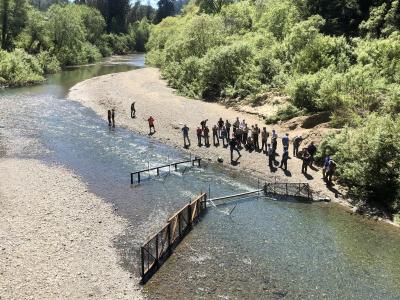Holding Space—Restoring Habitat and Making Room for Innovation
March 26 - 29, 2024
The Role of Conservation Hatcheries in Salmon Recovery
26 March 2024
9:00am - 5:00pm
Workshop Coordinators:
Mariska Obedzinski, California Sea Grant
Rory Taylor, US Army Corps of Engineers
Gregg Horton, Sonoma Water
Bob Coey, National Marine Fisheries Service
In many watersheds, particularly those at the southern edge of the range of anadromous salmonids, the Field of Dreams habitat restoration approach (“If you build it, they will come”) to salmon recovery doesn’t always happen at a fast enough pace to overcome land-use threats to highly imperiled populations. Assistance in the form of supplementing wild abundance via conservation hatchery releases can help buy time until ecological processes are restored to the point where habitat can support self-sustaining runs once again. Since hatchery releases allow the opportunity to mark and track fish, they can help identify bottlenecks to survival and inform habitat restoration efforts. To support endangered coho salmon recovery and prevent imminent extirpation, the Russian River Coho Salmon Captive Broodstock Program (RRCSCBP) began releasing coho into the Russian River watershed in 2004. After 20 years of hatchery releases, the Russian River coho population has increased from a handful of adults returning each year to a few hundred, but is still far from reaching the NMFS recovery target of over 10,000. The RRCSCBP has tested a suite of methods for spawning, rearing and releasing coho, and intensive hatchery and stream monitoring is used to evaluate different strategies. The workshop was a day to reflect on what strategies have been most successful, lessons learned, and next steps. The workshop included a combination of talks, a tour of the Don Clausen Fish Hatchery at Warm Springs Dam, and a panel discussion. Topics included hatchery practices, spawning approaches to maximize genetic diversity, release strategies, and monitoring approaches and results.

